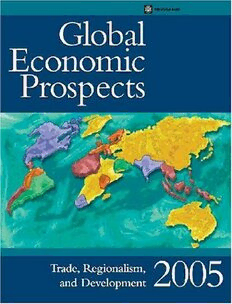
Global Economic Prospects: Trade, Regionalism, and Development 2005 PDF
184 Pages·2004·1.706 MB·English
Most books are stored in the elastic cloud where traffic is expensive. For this reason, we have a limit on daily download.
Preview Global Economic Prospects: Trade, Regionalism, and Development 2005
Description:
The proliferation of regional trade agreements is fundamentally altering the world trade landscape. The number of agreements in force surpasses 200 and has risen eight-fold in two decades. Today, as much as 40 percent of global trade takes place among countries that have some form of reciprocal regional trade agreement. Global Economic Prospects 2005: Trade, Regionalism, and Development addresses two questions: - What are the characteristics of agreements that most promote, or hinder, development for member countries? - Does the proliferation of agreements pose risks to the multilateral trading system, and if so, how can these risks be managed? The report argues that agreements leading to open regionalism--that is, deeper integration of trade as a result of low external tariffs, increased services competition, and efforts to reduce cross-border and customs delays costs--are effective as part of a larger trade strategy to promote growth. Such regional agreements can complement a strategy that, on the one hand, includes autonomous liberalization to promote productivity gains and, on the other hand, leverages domestic reforms to enhance market access. Although regional agreements can prove beneficial to member countries, they can have adverse effects on excluded countries. Lowering of border barriers around the world is crucial to minimizing these effects. The completion of the Doha Development Agenda by all countries in the World Trade Organization will reduce the risk of trade diversion associated with regional agreements and will decrease trade losses of countries excluded from agreements.
See more
The list of books you might like
Most books are stored in the elastic cloud where traffic is expensive. For this reason, we have a limit on daily download.
